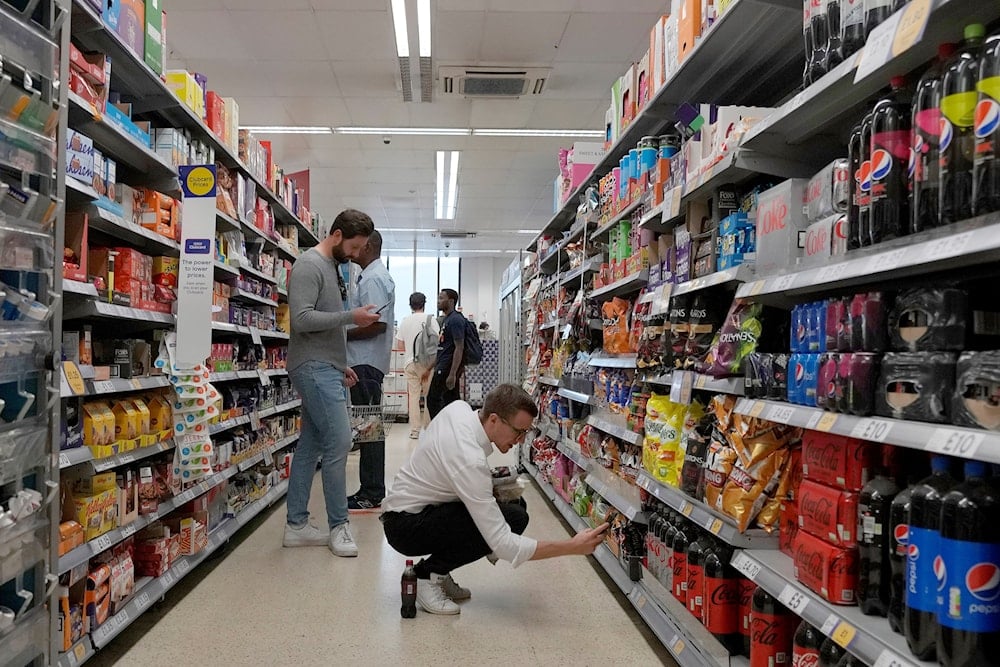UK living standards squeezed despite leading G7 growth
UK households saw a 1% drop in real disposable income and lower savings in early 2025 amid rising taxes and inflation, even as the economy posted the highest growth among G7 nations.
-

Shoppers buy food in a supermarket in London, Wednesday, Aug. 17, 2022. (AP)
Official figures reveal that UK households faced a renewed cost-of-living squeeze in early 2025 as higher taxes and inflation tightened budgets, despite the economy outpacing all other G7 nations in growth, The Guardian reported on Monday.
The UK's Office for National Statistics reported that real household disposable income per head, a key indicator of living standards, dropped by 1% in the first quarter of 2025 following a 1.8% increase in late 2024, marking the first quarterly decline in nearly two years.
Additionally, the households' saving ratio, measuring the proportion of disposable income saved rather than spent, fell by 1.1 percentage points to 10.9% in early 2025, though this level remains elevated by historical standards.
The latest economic data revealed a renewed pressure on living standards even as the UK recorded 0.7% growth in the first quarter, outpacing all other G7 nations.
Growth masking problems in households
Liz McKeown, the ONS director of economic statistics, explained to The Guardian that the saving ratio had dropped for the first time in two years this quarter, attributing the decline to increased spending on essentials like fuel, rent, and dining out, though she emphasized that savings levels remained fairly robust.
Ministers welcomed the first-quarter growth figures as a sign Labour’s policies were working after a difficult start, but the latest data shows living standards remain under strain, risking Keir Starmer’s pledge of tangible benefits for households.
In a major speech late last year, the prime minister had set out six key "milestones" for his government, including increasing real household disposable income per person by the end of the parliamentary term.
Although this metric declined during the previous Conservative government's term, marking the first such drop in modern records, projections suggest only minimal growth will be achieved before voters next go to the polls.
Inflation, taxes, weigh citizens down
According to the ONS data, the first-quarter decline was primarily caused by persistently high inflation and increased income tax burdens, though pre-inflation figures indicated that a £5.9 billion increase in wages and salaries partially boosted gross disposable income, while a simultaneous £4.4 billion rise in tax payments largely counteracted those gains.
The drop in the households' saving ratio stemmed from reduced non-pension savings coupled with increased consumer expenditure, which some analysts interpreted as potentially reflecting both the pressure of rising living costs on savings and a possible rebound in consumer sentiment.
Ruth Gregory, deputy chief UK economist at Capital Economics, told The Guardian that the decline in the household saving rate from 12.0% in the fourth quarter to 10.9% in the first quarter could signal a modest pickup in consumer spending growth in coming quarters.
The independent Office for Budget Responsibility currently predicts 1% GDP growth for the entirety of 2025, though this estimate will be reassessed ahead of Chancellor Rachel Reeves's autumn budget announcement.

 3 Min Read
3 Min Read









